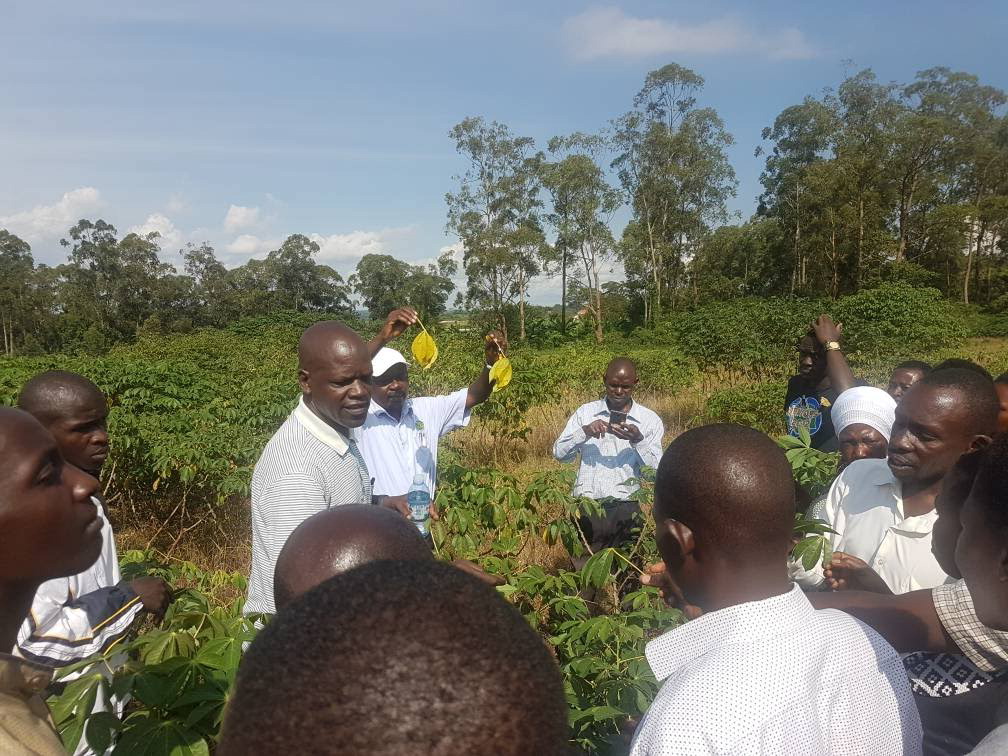|
Cycle 6 (2017 Deadline)
Scaled deployment of smart-phone agro-applications for field based diagnosis and real-time surveillance data collection
PI: Ernest Mwebaze, emwebaze@cit.ac.ug, Makerere University
U.S. Partner: Jesse Poland, Kansas State University
December 2017 - November 2018
Project Overview:
Cassava is a very important food security crop in Uganda and in the region and is a major crop grown by small-scale farmers who depend on it for their livelihood. The overarching goal of this project is to improve livelihoods of these small-holder farmers through provision of better tools that offer them actionable information about the health of their crops. This goal can further be broken down to two aims. The first centers around crowd sourcing of crop disease surveillance data from farmers. A total of 200 farmers will be provided with smart phones and, using several incentive schemes, will be encouraged to collect data about the state of health of their farms and gardens. The data will include both images and their geo-coordinates. The principal investigator’s hypothesis is that a great deal of data can be collected from all over the country cheaply and that this will be an empowering activity for the farmers. The second aim is to provide farmers with a system that can be used to provide real-time diagnosis of their crops. The mobile phones will be equipped with software that can calculate the state of health of a cassava crop by analyzing an image of its leaves. A farmer is therefore able to make the necessary early interventions in his garden.
This project draws on a prototype crowd sourcing system that the PI and his team have been testing for more than a year. They distributed phones to 29 people involved in agriculture in the different regions of Uganda and created a mobile phone application that they modified to allow the participants to take pictures of crops and upload them in real time. Data collected consists of an image of the cassava crop, the GPS coordinates, and a statement of whether the image taken is representative of disease, pests, or an anomaly. Using this current system the researchers collected more than 4,800 images from different places in Uganda (http://adsurv.mcrops.org/). Their PEER award will allow them to expand the network to 200 participants in order to generate evidence for a large-scale deployment of a digital system for crop disease surveillance data collection. In particular, they are interested in understanding how accurate the inferences from such data can be, how useful an on-field diagnosis application can be for smallholder farmers, and what incentive mechanisms work.
Summary of Overall Activities
 | | Training farmers on how to use smartphones to report surveillance data. |
The PI and his team implemented this project in 12 months to scale-up activities of previous BMGF funded project that supported the initial outreach and engagement with farmers. This project leveraged the success in that pilot to grow the number of farmers from 25 to 200 using a network of smartphones to report surveillance data to the National Crops Resources Research Institute(NaCRRI), the body in Uganda charged with carrying out surveillance of cassava throughout the country.
The PI engaged several undergraduate and graduate students in the project, enabling them to grow their skills and contribute to its success. Farmers gained knowledge on how to diagnose diseases in cassava and have used the training and knowledge obtained to develop businesses based on providing clean cassava planting materials, thus supporting their livelihoods.
The project provided an unprecedented, large quantity of geo-tagged images of cassava at different health levels that is being used to train better models to predict disease from images. Since the data is geo-tagged, it can also be used for disease spatial analysis. The team is pursuing these avenues and also working to put the dataset online for use by the wider community.
The PI also managed to form a team between the technical team in Makerere, the Uganda National Farmers Federation (UNFEE) and NaCRRI that is actively looking to further this project to support not only cassava, but also other crops. The PEER team have been in talks with other crop teams in NaCRRI who are interested in extending this system to cover cereal crops. From their collaboration with UNFFE and NaCRRI, numerous farmers were trained in disease identification in the field and best practices for mitigating disease.
Back to PEER Cycle 6 Grant Recipients
|
|
|
|




